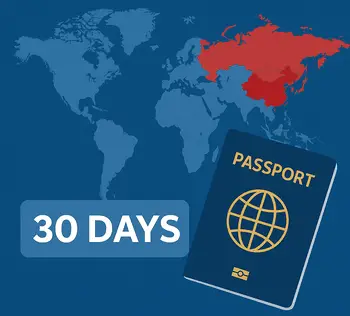
China welcomes over 145 million international visitors annually, yet language barriers remain the #1 concern for first-time travelers.
While China’s digital infrastructure has revolutionized communication tools, navigating daily interactions without Mandarin still requires strategic preparation.
This comprehensive guide provides tested solutions for real-world scenarios, from emergency situations to cultural nuances that can make or break your travel experience.
The Current Language Reality in China
Regional Language Variations
China’s linguistic landscape extends far beyond Mandarin, with significant regional differences that impact travelers:
| Region | Primary Languages | English Proficiency Level | Key Considerations |
|---|---|---|---|
| Beijing/Shanghai | Mandarin | Moderate-High | International business hubs |
| Guangzhou/Shenzhen | Mandarin, Cantonese | Moderate | Tech industry presence |
| Xi’an/Chengdu | Mandarin, Local dialects | Low-Moderate | Heavy tourist areas with guides |
| Rural Areas | Local dialects | Very Low | Minimal English exposure |
Source: China National Tourism Administration Language Survey 2023
Why English Remains Limited
Despite mandatory English education, practical conversational skills lag due to:
- Exam-focused learning systems emphasizing reading over speaking
- Limited daily English usage outside major business districts
- Generational gaps (ages 35+ have minimal English exposure)
- Regional economic factors affecting international exposure
Essential Pre-Travel Digital Preparation
Critical Apps for China Travel
| App Name | Primary Function | Offline Capability | Key Features |
|---|---|---|---|
| Baidu Translate | Translation | Yes | Superior Chinese accuracy, voice translation |
| Everything platform | Limited | Payments, mini-apps, translation feature | |
| Pleco | Dictionary | Yes | Handwriting recognition, pronunciation |
| Waygo | Visual translation | Yes | Menu/sign translation via camera |
| DiDi | Transportation | No | English interface, pre-set destinations |
Important: Download and test all apps before departure. Google services require VPN access in mainland China.
Offline Preparation Essentials
Create a physical backup system including:
- Hotel business card in Chinese characters
- Common destination names in simplified Chinese
- Medical condition cards (if applicable)
- Emergency contact information in Chinese format
- Currency conversion charts with Chinese numerals
Scenario-Based Communication Strategies
Food Ordering Solutions
Tier 1 Cities (Beijing, Shanghai, Shenzhen):
- 70% of restaurants have picture menus or English sections
- Food delivery apps (Meituan, Ele.me) offer English interfaces
- International food courts in shopping malls
Tier 2-3 Cities Strategy:
- Use Waygo app for instant menu translation
- Learn food restriction phrases: “我不吃肉” (I don’t eat meat)
- Point-and-order method with price confirmation
- Ask hotel staff to write dietary restrictions in Chinese
Essential Food Phrases:
| English | Chinese | Pinyin | When to Use |
|---|---|---|---|
| I want this | 我要这个 | Wǒ yào zhège | Pointing at menu items |
| No spicy | 不要辣 | Bù yào là | For sensitive stomachs |
| Bill please | 买单 | Mǎi dān | End of meal |
| Water | 水 | Shuǐ | Basic necessity |
Transportation Navigation
Metro Systems:
- All major cities have bilingual signage
- Download city-specific metro apps before travel
- Use landmark-based navigation over street addresses
Taxi and Ride-sharing:
- DiDi supports English but requires Chinese phone verification
- Show destinations via map screenshots
- Carry cash (mobile payments may require local bank cards)
Long-distance Travel:
- Book tickets through English platforms like Trip.com or Ctrip
- Print tickets with Chinese confirmations
- Arrive early for station navigation assistance
Emergency and Critical Situations
Medical Emergencies
Preparation:
- Identify international hospitals in your destination cities
- Translate medical conditions via professional translation services
- Carry prescription labels in Chinese
Emergency Phrases:
| Emergency | Chinese | Pinyin |
|---|---|---|
| Help! | 救命! | Jiùmìng! |
| I need a doctor | 我需要医生 | Wǒ xūyào yīshēng |
| Call ambulance | 叫救护车 | Jiào jiùhùchē |
| I’m allergic to… | 我对…过敏 | Wǒ duì… guòmǐn |
Key Resources:
- Emergency number: 120 (medical), 110 (police)
- International SOS: www.internationalsos.com
- Embassy contact information pre-saved
Getting Lost or Stranded
Immediate Actions:
- Use WeChat’s location sharing feature
- Show taxi drivers your hotel business card
- Contact hotel concierge via WhatsApp/international calling
- Use landmark-based navigation (show photos of nearby recognizable buildings)
Cultural Communication Nuances
Understanding Indirect Communication
Chinese communication style emphasizes:
- Face-saving: Avoid causing embarrassment through direct confrontation
- Indirect refusal: “Maybe later” often means “no”
- Group harmony: Loud or aggressive behavior is particularly unwelcome
Non-Verbal Communication Guide
| Gesture | Meaning in China | Travel Application |
|---|---|---|
| Thumbs up | Good/OK | Universal positive |
| Pointing with finger | Rude | Use open hand instead |
| Number gestures | Different from Western | Learn Chinese number hand signs for ordering |
| Gift giving | Two hands required | When thanking helpers |
Advanced Problem-Solving Strategies
Finding English Speakers
High-probability locations:
- University campuses (approach students)
- International hotel lobbies
- Starbucks and international chains
- Shopping mall information desks
- Tourist information centers
Leveraging Technology Creatively
- Use smartphone drawing apps for complex explanations
- Google Images for showing desired items/services
- Calculator apps for price negotiations
- Map screenshots for location sharing
Building Local Networks
- Join WeChat travel groups for your destination
- Connect with expat communities via Facebook groups
- Use language exchange apps like HelloTalk for local connections
Regional-Specific Considerations
Hong Kong and Macau
- English widely spoken due to colonial history
- Traditional Chinese characters (different from mainland)
- Cantonese primary spoken language
Border Regions
- Xinjiang: Uyghur language prevalent
- Tibet: Tibetan language common
- Northeast: Some Russian influence in border towns
Budget-Friendly Communication Solutions
Free Resources
- Chinese consulate cultural centers offer basic language classes
- YouTube channels: ChinesePod, FluentU Chinese
- Library language exchange programs
- University partnership programs
Paid Services Worth the Investment
- Professional translation of medical documents: $50-100
- Local guide for first-day orientation: $30-50/day
- International SIM card with data: $25-40
- VPN service for Google access: $5-15/month
Success Metrics and Realistic Expectations
Week 1: Focus on survival phrases and app familiarity
Week 2: Attempt basic transactions independently
Month 1: Navigate complex situations with minimal assistance
Common Misconceptions:
- Myth: “Everyone in Shanghai speaks English”
- Reality: Service industry workers have limited conversational English
- Myth: “Translation apps solve everything”
- Reality: Context and cultural nuances still require human interpretation
Final Recommendations
Language barriers in China are manageable with proper preparation and realistic expectations.
Success depends more on patience, creativity, and cultural sensitivity than linguistic perficiency.
The key is building a multi-layered communication strategy combining technology, basic Mandarin phrases, and cultural awareness.
Essential Resources for Ongoing Support:
- China Travel Facebook Groups: China DIY Travel
- Official Tourism Website: www.travelchina.gov.cn
- Emergency Assistance: Your country’s embassy website
Remember: Every challenging communication experience becomes a memorable story and cultural learning opportunity. Embrace the adventure while staying prepared for practical realities.


